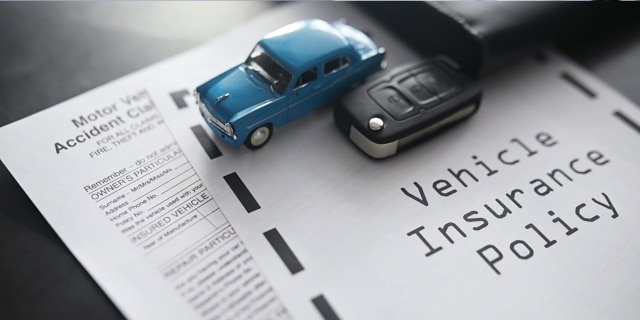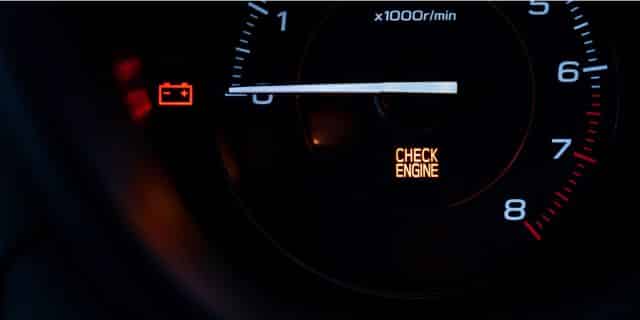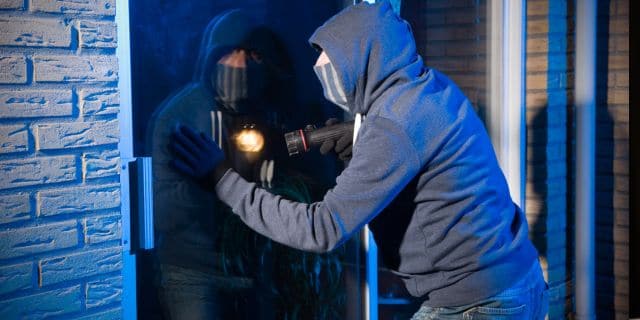
by California Casualty | Helpful Tips, Homeowners Insurance Info |
Is your house trying to tell you something? From mysterious knocks to unsettling creaks, the noises in your home could be more than just background sounds—they might be early warnings of bigger issues. Listen closely, because ignoring these whispers from your walls could cost you more than a good night’s sleep.
Heating and Cooling Systems
Unusual sounds from your HVAC (heating, ventilation and air conditioning) system might mean that it’s struggling. Get these issues checked before you lose heat during the frigid winter months or cooling relief during the hottest time of year.
- Squeaking or Squealing: Bearings in the motor may need oiling or a piece could be broken. You also could have a worn-out or misaligned fan belt. Ignoring this sound can lead to motor failure, so address this soon.
- Whistling: This could be the sign of air leaks in the ductwork or a dirty air filter. Try replacing the filter first and see if the sound disappears. Filters should be replaced every three months.
- Grinding: Moving parts aren’t operating smoothly or it could be worn-out bearings in the motor. Get that checked out.
- Popping: This can indicate moisture or a clog in the gas line. It also could be expansion or contraction of the ductwork, especially when turning on the heat.
- Clanking or Banging: This happens in air handlers or furnaces due to rusted or chipped metal, or soot buildup.
- Clicking: A malfunctioning electrical relay could create a clicking sound.
- Boiler Knocking: The circulation pump may be failing.
- Hissing: This could signal a leak in the refrigerant line, or there could be an internal valve leak. The compressor pressure also could be too high.
- Gurgling: You could be low on refrigerant or have a coolant leak.
- Booming: There could be airflow issues where the ducts connect.
- Buzzing: This sound could be caused by loose wiring, a failing motor, or capacitors that are malfunctioning.
- Rattling: There may be loose parts within your unit, such as screws or fan blades.
Appliances
Unusual noises from appliances with motors might mean a mechanical problem. Homeowner warranties usually cover this type of issue.
- Humming Dryer: Your clothes dryer could have an object caught in its blower.
- Buzzing Refrigerator: The refrigerator could have an ailing compressor.
- Grinding Dishwasher: If your dishwasher sputters or grinds, something could be stuck in its chopper blade.
- Popping or Rumbling Water Heater: Water heaters operate almost silently, so if you hear sounds, don’t ignore them. Popping or rumbling could be due to sediment buildup on the bottom. It means it’s struggling to operate and might fail. You may need to flush the inside of the tank.
- Noises from Gas Appliances: Don’t wait on gas appliances that are making noises. This may indicate a leak that could be serious.
Plumbing and Pipes
You want your plumbing and pipes to work properly. Water can cause significant damage if problems aren’t addressed in a timely manner.
Clanking: This sound could be a steam radiator that is not draining properly. It also could indicate a loose pipe. Get that fixed, as loose pipes moving around could lead to burst pipes.
- Banging or Thumping: This is caused by water changing direction or being brought to a sudden halt. Usually, it doesn’t cause problems, but the sound can be annoying. You can buy a water hammer arrestor for appliances that reduce the noise.
- Gurgling Toilet: This could indicate a plumbing backup somewhere. It could be a partially clogged drain, a problem with the flush value, a buildup of sediment in the tank, or inadequate venting in the plumbing system. You will want to call a plumber sooner than later.
- Dripping: Water leaks inside a wall can lead to mold or mildew and can destroy insulation. Try to isolate where the dripping sound is coming from. Get professional help as needed.
- Water Loss Test (water meter): If you cannot find the leak, try a water loss test. Look at the water meter and write down the reading. Stop all use of water in your home for 30 minutes. Do not flush the toilet or use the sink, tub, shower, dishwasher or washing machine. Turn off the ice maker and sprinkler. Then check the water meter at the end of the half hour. If the reading is unchanged, you do not have a leaky pipe. You could have a leaky toilet or appliance.
- Water Loss Test (well water): If you have well water, you won’t have a water meter to check. Stop all water use and stand near your water pump for 30 minutes. Listen for clicking sounds from the pump which could indicate a water leak.
Lights and Outlets
The lights and outlets in your home are connected to the electrical system. When components of this system fail, it not only is frustrating but could be dangerous.
- Humming, Buzzing, Hissing, Crackling or Popping (light switches and outlets): Buzzing is the sound of electricity arcing across a bad connection. If you hear buzzing from your light switch or outlet, or a hissing/crackling/popping sound, stop using it immediately and call an electrician.
- Humming, Buzzing, Whining (bulbs or dimmers): If a fluorescent bulb is making the noise, it means a ballast likely needs to be replaced. That is the part that controls the voltage to the bulb. If the dimmer is making the noise, replace it. You can also try changing the bulb as some bulbs work better with dimmers.
Walls, Ceilings & Windows
Unexpected sounds from above or behind the walls might mean unwanted guests. Noises from your windows could signal hidden openings. Both could translate to expensive repairs if not addressed.
- Skittering: This is the sound of critters in your home: raccoons, squirrels, birds, and even insects. The longer they are there, the more damage they can do, from chewing through wiring and insulation to giving birth to babies. When these animals die in your walls, they also cause an awful lingering odor. Take note of when you hear the sounds. Rodents are nocturnal. Call an exterminator. Be sure to search and seal the openings that allowed critters into your house or more could follow.
- Buzzing: If you hear a buzzing sound in your walls, it could indicate a colony of bees making their nest there. Carpenter bees are especially known to do lots of damage by burrowing in your wood. Contact a professional pest removal service to safely get rid of this hazard.
- Creaking and Squeaking (floors): These sounds could be the house settling, or they could be caused by temperature changes that result in the wood boards rubbing against each other. However, when the squeaking is accompanied by sagging or gaps in the floor, you will want to consult a professional.
- Whistling (windows): Whistling sounds could point to improper installation, worn weather stripping, or poor seals. Check the seal around your windows for signs of wear, and caulk or reseal as needed.
- Rattling (windows): Something is not fitting quite right if you hear rattling. Get it checked out as this could lead to cracks in the glass.
Your home is your greatest investment. Keep up with winter home maintenance and protect your home with the right insurance for added peace of mind.
This article is furnished by California Casualty, providing auto and home insurance to educators, law enforcement officers, firefighters, and nurses. Get a quote at 1.866.704.8614 or www.calcas.com.

by California Casualty | Auto Insurance Info, News |
Imagine getting into a fender bender and realizing your insurance won’t fully cover the damages. With rising medical costs and repair expenses, California is making its first major update to auto insurance requirements in over 50 years. Starting January 1, 2025, new higher minimum liability limits will better protect drivers from unexpected financial burdens. But what do these changes mean for you? Let’s break it down.
Understanding Liability Coverage
Liability insurance helps cover damages if you cause an accident. It does not cover your own injuries or vehicle damage—that’s where collision and comprehensive coverage come in.
Because accidents can lead to costly damages, liability insurance is required by law in most states to protect victims of accidents. It consists of two parts:
- Bodily Injury Coverage – Pays for medical expenses, lost wages, and pain and suffering for the other driver and passengers.
- Property Damage Coverage – Pays for repairs or replacement of the other vehicle or damaged property, such as a fence or building.
Why Coverage Limits Matter
When you buy liability insurance, you choose a coverage limit. If the costs of an accident exceed your limit, you’ll have to pay the difference out of pocket. For example, if your policy covers $50,000 per person, but the injured driver’s medical bills total $60,000, you would be responsible for the extra $10,000.
The main goal of liability insurance is to protect your assets, and so you may choose a higher limit than the state specifies. You’ll want to take into account the amount of medical expenses that could be incurred in an accident. You could be responsible for lost wages for the driver. If tragically he or she dies, you could be providing lost wages for the driver’s family.
On the other hand, if you’re the victim of an accident and the at-fault driver has higher liability limits, their insurance will be better equipped to cover your medical expenses and property damage. So, that’s good news.
What’s Changing in 2025?
California’s previous minimum coverage limits—set in 1967—were among the lowest in the nation. The costs of medical car and car repairs have increased substantially since that time. The new limits under Senate Bill 1107 (the Protect California Drivers Act) increase the minimum amount of coverage to align more closely with today’s costs. They seek to reduce the financial burden on crash victims.
Effective, January 1, 2025, the new limits are as follows:
- $30,000 for injury or death to one person (previously $15,000)
- $60,000 for injury or death to multiple people (previously $30,000)
- $15,000 for property damage (previously $5,000)
While increasing liability limits provides better financial protection, it can also lead to a slight rise in premiums, especially for those who currently have only the minimum required coverage. However, this added cost is often minimal compared to the potential financial burden of an accident that exceeds your policy limits.
Time to Review Your Auto Policy
With these new requirements, now is the perfect time to review your auto coverage. While many insurance companies will automatically update your policy if you reside in California, you’ll want to make sure the new limits are in place. After all, failing to meet the new minimums could result in:
- Legal penalties, fines, impoundment of your vehicle, or suspension of your driver’s license and/or registration
- Out-of-pocket expenses for medical bills, property damage, and legal fees
How to Save on Coverage
Higher limits don’t always mean higher costs. At California Casualty, we offer package discounts and savings for customers carrying higher coverage levels. Additional discounts may apply if you:
- Are a member of an eligible group (educators, nurses, first responders, firefighters and law enforcement);
- Bundle home and auto insurance;
- Take a driver safety course; and/or
- Maintain a good insurance score known as the Financial Responsibility (FR) Score.
Knowing what affects your car insurance rate can help you make changes to reduce the amount you pay while still getting great coverage. Learn more about your options and get a free quote today.
This article is furnished by California Casualty, providing auto and home insurance to educators, law enforcement officers, firefighters, and nurses. Get a quote at 1.866.704.8614 or www.calcas.com.

by California Casualty | Auto Insurance Info, Helpful Tips |
You are miles from nowhere when suddenly, your headlights dim, your dashboard flickers, and your car starts losing power. No, it’s not a scene from an action thriller—it’s a sign that your alternator might be failing. But how do you know when it’s time to replace it? Let’s break down the signs before your car breaks down on you.
What is an alternator?
The alternator is a small but mighty component responsible for keeping your battery charged and your vehicle’s electrical systems running smoothly. It converts kinetic energy into electrical energy. That energy charges your car’s battery so that it can start and also powers your car when running. Over time, wear and tear can reduce the alternator’s efficiency, preventing it from fully charging the battery. While there’s no exact timeframe for replacement, alternators typically last between 100,000 and 150,000 miles. It’s risky to drive a car with a bad alternator. It can leave you stranded.
Bad battery or bad alternator?
Since the alternator and battery work closely together, sometimes the signs you are seeing could mean you need to replace the battery and not the alternator. Consider the age of both parts and their condition. The average battery life is 3-5 years, so if your battery hasn’t been replaced in that long, check that first.
Signs of a bad battery:
- Your vehicle is hard to start or won’t start at all.
- You hear a clicking noise when trying to start the car, or it takes longer for the engine to catch.
- You notice dim or flickering headlights, taillights or dashboard lights.
- Your car consistently has a dead battery. This could also be due to a bad alternator.
Signs of a bad alternator:
- You notice dim or very bright headlights. (This is due to the inconsistent flow of electricity generated by the alternator.)
- Your vehicle doesn’t start.
- Your lights and gauges dim, and then your car stalls when driving.
- There is a warning light on your dashboard.
- You notice a burnt rubber smell and/or loud grinding noise.
Do you have a multimeter? That’s a surefire way to know if the alternator is failing. When the car is not running, check the voltage at the battery. It should be between 12 and 12.5 volts. Then check the voltage again when the car is running. The voltage level should increase between 13.5 and 14.5. If the voltage does not increase, the alternator is bad. If it does increase, yet you are still experiencing some of the issues listed above, then it is likely that the battery is bad.
How to Replace the Alternator
You can certainly take your car to your mechanic for an alternator replacement. However, if you’re handy and have some experience working on cars, here is a guide to replacing your alternator.
Pro tip: take photos of each piece before disconnecting them so you know how to hook everything back up.
Check Your Vehicle’s Manual: Identify the type of alternator you need and purchase it.
- Gather Your Supplies: Get a socket and wrench set, gloves, safety glasses, and a memory saver. A memory saver provides a small current to preserve your car’s electronics and prevent the need for reprogramming; it typically plugs into the power port.
- Backup Electronic Data (if needed): Refer to your manual to determine if backing up preset electronic data from your car’s computer is necessary.
- Turn Off the Engine: Shut off your car’s engine and put on your safety gear.
- Disconnect the Battery: Remove the negative cable from the car battery. Disconnecting the positive cable is optional.
- Loosen the Belt Tensioner: Release the tension on the serpentine belt and remove it. Inspect the belt for wear and tear, replacing it if needed.
- Remove Alternator Attachments: Disconnect all cables and bolts securing the alternator, including the voltage regulator connector, the alternator’s positive cable, the brace nut and bolt, and the lower mounting bolt.
- Replace the Alternator: Remove the old alternator and install the new one in the same position.
- Reassemble: Reattach all previously disconnected components.
- Test Voltage: If available, use a multimeter to ensure the voltage reads between 13.5 and 14.5 volts when running.
Maintaining Your Alternator
You also can take steps to reduce the wear and tear on your alternator and keeping it working at its best.
- Schedule regular maintenance and ask your mechanic to check the alternator every time. Regular maintenance also will help your car last longer.
- Regularly clean your alternator to remove dirt, grease, and debris. These can cause it to overheat.
- Tighten loose connections that can affect the alternator’s performance.
- Look out for fluid leaks around the alternator. Fluid and oil buildup can shorten an alternator’s lifespan. Identify the source of the leak as soon as possible. (Usually, it’s not the alternator that is leaking.)
- Keep your belts in good condition. Worn belts can loosen the alternator mountings.
- Be careful with aftermarket electronics. Improperly installing them can overload the alternator.
- Maintain and replace your battery as needed so that you will know that it’s not the battery if your vehicle’s electrical system fails.
Finally, the right coverage for your vehicle is important for added peace of mind. Schedule an annual review with your insurer to make sure your vehicle is fully protected. Safe travels.
This article is furnished by California Casualty, providing auto and home insurance to educators, law enforcement officers, firefighters, and nurses. Get a quote at 1.866.704.8614 or www.calcas.com.

by California Casualty | Auto Insurance Info, Helpful Tips, Travel |
You’re ready to hit the road, but your car has other plans—stuck in a snowbank with tires spinning. Before your frustration gets out of hand, take a deep breath. With the right techniques and a little patience, you can free your vehicle and get back on track. Here’s your step-by-step guide to escape the snow’s icy grip without breaking a sweat—or your car!
1. Stay Safe and Assess the Situation
Before doing anything, ensure you’re safe. Turn on your hazard lights and assess the situation. Are other vehicles nearby? Make sure you’re visible to others and have enough space to work around your car safely.
2. Clear the Exhaust Pipe
Check your car’s tailpipe for snow and ice. A clogged exhaust can cause dangerous carbon monoxide to back up into the vehicle’s cabin. Clearing it is a critical safety step before you start working to free your car.
Use a shovel or any sturdy tool to remove snow around the tires, under the car, and along the path you want to travel. Clearing as much snow as possible will make it easier to gain traction and move forward.
4. Try Melting the Snow
If the snow around your wheels is packed and icy, try sprinkling salt or a de-icing agent. Be cautious, as salt can cause rust on your vehicle, and some chemicals may be harmful to pets and the environment.
5. Add Traction
Improve your grip by spreading dry materials like sand, kitty litter, or even your car’s floor mats under the tires. These items can provide the friction needed to get your car moving.
Pro Tip: Lower your window slightly to listen for spinning wheels as you press on the gas. If you hear them spinning, it’s not working.
6. Choose the Right Driving Technique
Depending on your type of vehicle, you will want to take advantage of its strengths.
-
-
- 4-Wheel Drive: If your vehicle has a 4-wheel drive option, turn it on to deliver power to all wheels. Use a low gear in an automatic to reduce wheel spinning.
- Front-Wheel Drive: Turn your steering wheel left and right repeatedly to find a patch of traction.
- Manual Transmission: Start in second gear to reduce wheel spin and increase grip.
7. Turn Off Traction Control
Your traction control system can prevent your wheels from spinning, which helps in skids but can hinder your efforts when stuck. Temporarily disable it to give your wheels the power they need to move.
8. Rock Your Vehicle
Gently rock your car by shifting between forward and reverse gears. Apply light gas pressure—avoid flooring it—and stop if it’s not working after a few tries to prevent transmission damage.
9. Let Air Out of Your Tires
In extreme cases, slightly deflate your tires to increase surface contact and improve traction. Only do this if you’re near a place to reinflate them, as driving on underinflated tires can be dangerous.
10. Call for Roadside Assistance
If all else fails, it’s time to call for help. Roadside assistance professionals have the tools and expertise to safely free your vehicle.
After You’re Unstuck
Once your car is free, pull over in a safe spot and inspect your tires. Spinning wheels can pack snow and ice into the treads, making steering difficult. Use a snow scraper to clear them and restore proper grip. Don’t forget to turn your traction control back on before resuming your drive. Follow winter driving safety tips to prevent any future issues.
Be Prepared for the Future
Getting stuck in deep snow can damage your car’s transmission, battery, or drivetrain. Get your car checked out if you have been stuck in deep snow.
In addition, prepare for any future incidents. Keep a winter emergency kit in your vehicle, including:
- Ice scraper and snow brush
- First aid kit
- Flashlight and flares
- Blankets
- Tire pressure gauge
- Car jack
- Cell phone charger
- Kitty litter or sand for traction
Finally, make sure your vehicle is protected for winter with the right insurance. This will help add peace of mind. Safe travels.
This article is furnished by California Casualty, providing auto and home insurance to educators, law enforcement officers, firefighters, and nurses. Get a quote at 1.866.704.8614 or www.calcas.com.

by California Casualty | Helpful Tips, Homeowners Insurance Info |
There’s no place like home. It’s where life unfolds, memories are made, and your most treasured belongings reside. Protecting it means safeguarding not only your possessions but also your sense of security. From simple habits to smart upgrades, here are some practical tips that keep your home safe and your peace of mind intact.
Secure your doors and windows.
Your doors and windows are the primary entry points to your home, so it’s essential to ensure they only welcome invited guests. Here’s how to keep them secure.
- Check and maintain locks: Regularly inspect locks on doors and windows. Repair or replace any that are broken or show signs of wear.
- Lock up when you leave: Always keep doors and windows closed and locked when you’re not at home to deter unwanted visitors.
- Install window alarms: Affordable, adhesive window alarms are a simple way to deter burglars. These devices emit a loud sound if tampered with, scaring off potential threats.
- Enhance front door visibility: Ensure you can see who’s at your door without opening it, whether through a peephole, camera, or nearby window. This reduces the risk of letting in uninvited visitors.
Light your home inside and out.
Lighting isn’t just about setting the right mood—it’s also a powerful tool for keeping your home secure.
- Illuminate the exterior: Ensure outdoor areas like entryways, driveways, and pathways are well-lit to make your property less appealing to unwanted visitors.
- Use layered lighting: Combine porch lights, path lights, and landscape lighting to eliminate dark spots around your home, making it harder for anyone to hide.
- Install motion sensor lights: These lights activate with movement, startling potential intruders and drawing attention to their presence.
- Automate your lighting: Use a smart device or timer to turn lights on and off when you’re away. This creates the illusion that someone is home.
Landscape your yard with safety in mind.
Take a look at your landscaping. Are there spots where intruders could hide, or easy access points like tree branches that could lead to an upstairs window?
- Clear overgrown areas: Remove any dense bushes, tall grass, or other overgrown spots that could provide hiding places near your home.
- Trim trees: Ensure tree branches are cut back so they don’t offer a foothold to access upper windows or levels.
- Secure your outdoor valuables: Make sure that your grill, lawn mower, and bicycles are out of sight. Lock your shed and your garage.
- Walk your property: Approach your home as if you were a stranger. Look for areas where an intruder could observe your comings and goings without being noticed. Take action to eliminate those hiding spots.
Invest in a security system.
A professionally installed security system not only deters burglars but also alerts authorities in the event of a break-in.
- Keep your alarm panel hidden: Avoid placing your alarm panel in view of the outside, where someone could see you arming or disarming it.
- Test your system regularly: Ensure your security system is functioning properly by testing it periodically.
- Address faulty alarms: If your alarm goes off frequently for no reason, that can cause it to be ignored. Have it repaired. Then tell your neighbors it is fixed.
- Advertise your security system: Display a window sticker or lawn sign to let potential intruders know your home is protected.
Don’t advertise to potential intruders.
Sharing certain information or leaving items visible can attract burglars and provide them with the perfect opportunity to strike. Protect your home by taking these precautions.
- Keep valuables out of sight: Avoid placing valuable items where they’re visible from the street, such as near windows or in open garages. Keep your most important items in a safe.
- Secure garage windows and doors: Frost or cover garage windows to prevent anyone from peeking inside and always keep the garage door closed when not in use.
- Be cautious on social media: Avoid posting about recent purchases. Don’t share vacation photos while you’re away.
- Avoid obvious signals: Never leave notes on your door indicating you’re not home.
- Don’t leave spare keys outside: Common hiding spots like under a planter or welcome mat are the first places burglars will check. Instead, leave a spare key with a trusted neighbor or friend.
Don’t have packages on your porch.
Porch pirates are a common danger in many neighborhoods, but a few simple steps can make it harder for them to steal your deliveries.
- Choose secure delivery locations: Have packages delivered to a secure pickup location or a locker if possible.
- Request signature confirmation: Require a signature for delivery to ensure someone is home to receive the package.
- Disguise your disposal: Avoid leaving branded boxes from expensive items, like TVs, in your trash or recycling where they’re visible. Break them down and conceal them to avoid drawing attention.
Establish a home safety network.
Do the things you need to do on a regular basis to check in on security for your home and your area.
- Get to know your neighbors: Build a network of trust by watching out for each other’s homes and reporting any suspicious activity.
- Connect with local police: Ask local law enforcement about past incidents in your area so you can take precautions against those types of incidents.
- Plan for when you are away: Stop mail deliveries or ask a trusted neighbor to collect your mail, newspapers, etc. Arrange for services like lawn care, snow removal, or garbage pickup to make your home appear occupied.
Finally protect your home and your belongings with the right insurance, including personal property coverage. Taking these steps gives you peace of mind and ensures your home is protected no matter where life takes you.
This article is furnished by California Casualty, providing auto and home insurance to educators, law enforcement officers, firefighters, and nurses. Get a quote at 1.866.704.8614 or www.calcas.com.





